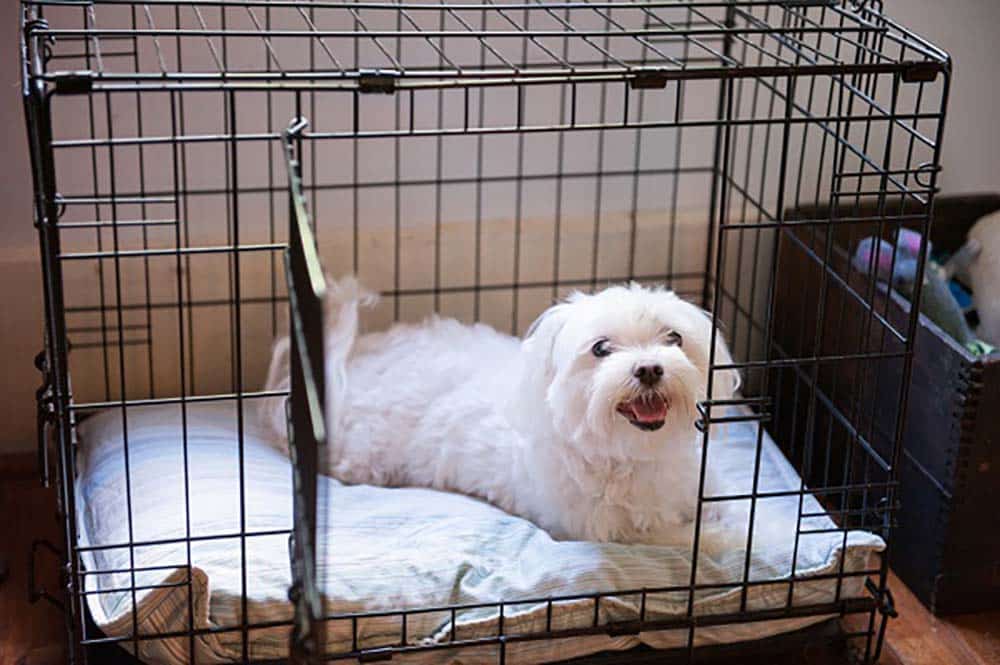The Beauty of Crating
Whenever we meet with a new client or send a dog home from our boarding school program, we usually recommend that owner crate the dog in the car. Most times they say, “I have a crate but it’s in the house.” That’s great. We are big proponents of the crate as a management tool in the house, but many people don’t realize the benefits of crating the dog while in the car as well. Here are our 3 insights on the beauty of car crate training for your dog.
1) Prevent Them From Eating People Food
Everyone knows puppies like to chew things but they don’t always realize that happens in the car as well. We have seen many a chewed seatbelt, which is very costly to replace, as well as chewed consoles, also costly to repair. Then there’s the eating of things they shouldn’t be eating, like the client whose poodle ate an entire package of sugarless gum (containing xylitol which is poisonous to dogs) and had to make a trip to the emergency vet. There’s also the usual bouts of diarrhea because the dog got into a child’s backpack and ate something that didn’t agree with him, or the dog that got into mom’s sandwich while she ran into the dry cleaner.
2) Car Crate Training Helps with Anxiety
Many people don’t think about the benefits to anxiety and reactivity. We often see dogs who are over aroused by the fast movement of things flying past as you drive. Many herding breeds can be stressed by this and respond by running from window to window, barking and getting themselves all worked up. Placing the dog in the crate with a blanket or towel over it to reduce the visual stimuli allows the dogs to lie down and relax. Some dogs have the same overly excited response to windshield wipers. Once again, the crate helps create relaxation.
Then there are the dogs who are reactive to other dogs, people, bikes, skateboards, etc. These dogs spend the car ride patrolling the windows, waiting for you to stop at a traffic light near a cyclist or to pass a person walking their dog. They then have a full-on freak out, barking and snarling at the windows, giving the driver and the person outside a heart attack. Once again, the crate helps to prevent this behavior from escalating because most dogs will lie down in the crate and relax, instead of patrolling.
3) Car Crate Training Gives You Freedom
In addition, on cool fall and winter days, when you take your dog hiking, or snowshoeing, or cross-country skiing, and you want to stop to grab a bite to eat on the way home, your dog can wait in the car in these cool conditions, with the windows down and he is safely snuggled in his crate.
No worries about him jumping out an open window. And finally, there’s the cleanliness factor. Have you ever returned from a walk or hike with your pup, only to realize he got a lot muddier than you had planned? Of course, this is the day he’ll jump into the front and spread his mud all over your new car seats. A crate is a handy way to keep your pup and his mess confined, so that when you are heading to work or a night out in a nice outfit, it stays clean because your dog has his own space in the car and it’s not up front where you sit.
The crate is a very versatile tool and can help in a variety of situations, so do yourself a favor and get two, one for home and one for the car. It will end up being less expensive in the long run.

